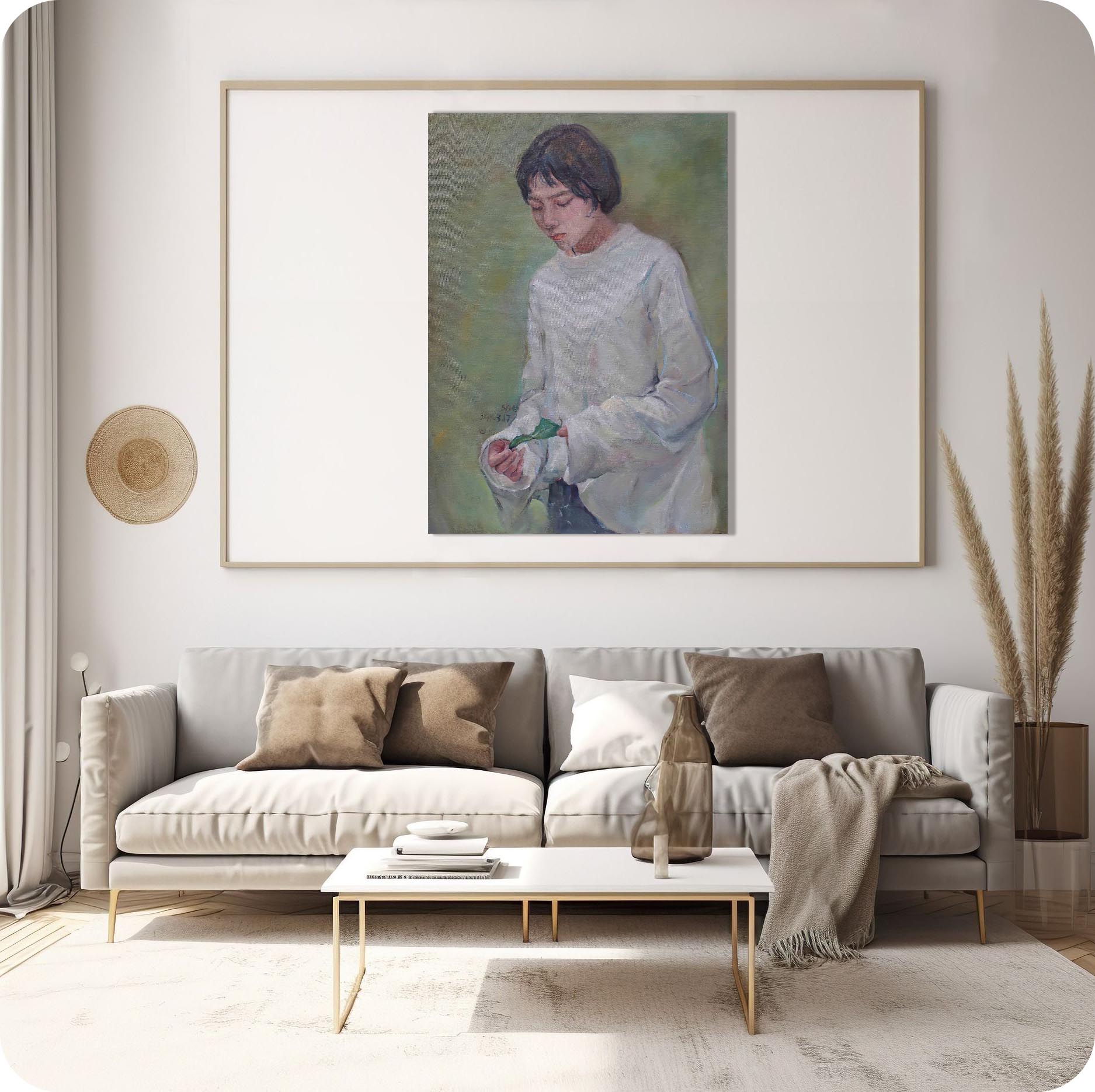This painting was created in 2018. With the end of the sketching class this year, my sketching journey stopped at a few simple drawings for Miss Hui. Of course, my oil painting skills have also improved a lot in the past year or so, and I have carefully explored my own way of speaking.
Overall Size: /
Size without the frame: /
Country: China
Date: 2018
Materials: Oil paint on linen
Condition: well preserved
Creative themes and style | My works revolve around the creative concept of "The land of humanity, People on the land". The people in the painting are people in nature, and the lines, shapes, and colors are close to nature. The nature in the painting is nature in the eyes of humans, existing in interaction with humans.I don’t pursue a series of works with a fixed and continuous style. I hope that the style of the pictures will synchronize with the changes in my life and always remain oscillating. The performance of the work must be in sync with the development of one's own life in order to be Sincere and powerful. Ideas are later.
An Interview with Artist Philo by Artphiloso Gallery
If you would like to collect this artwork or know more about the artist, please contact us.

A1: The downcast gaze and restrained posture convey introspection and emotional withdrawal. She appears immersed in an inner sense of loss, unwilling to meet the outside world’s eyes.
A2: The green leaf represents life, hope, and fragility. She holds it gently, as if afraid of losing it. This gesture reinforces the theme of Loss—the longing to hold onto something that is already slipping away.
A3: The loose, plain white garment symbolizes both purity and solitude, while also creating a sense of “emptiness” that mirrors her hollow emotions. The whiteness draws the viewer’s attention more sharply to her expression and the leaf in her hands.
A4: The background offers no defined setting, only hazy washes of green. This green extends the symbolism of the leaf, alluding to nature and hope, yet its blurred treatment suggests uncertainty—like the figure’s unclear sense of the future.
A5: The essence of Loss is “tender sorrow.” The figure is not dramatic or hysterical, but quietly and inwardly expresses a sense of absence. Within her silence, viewers can feel an unspoken vulnerability and poetic melancholy.
A: Click here to view ARTPHILOSO's Guide for Collectors.
